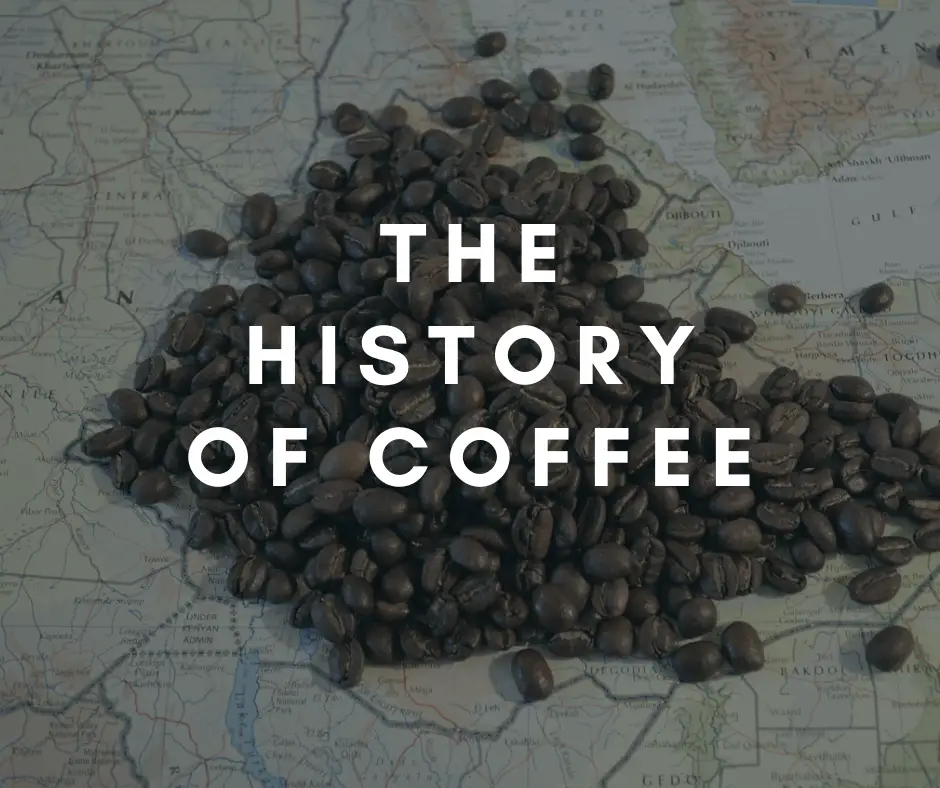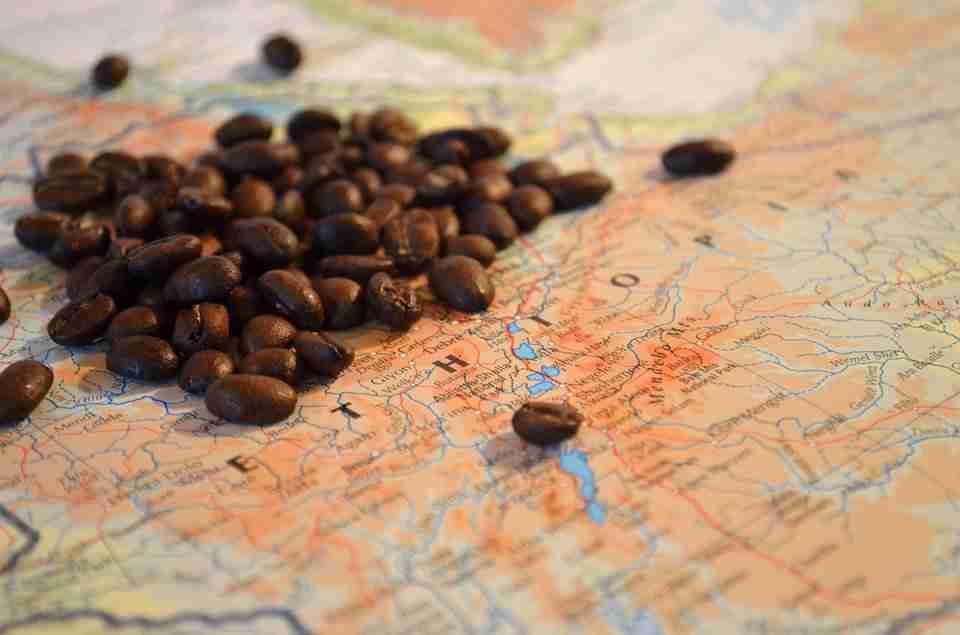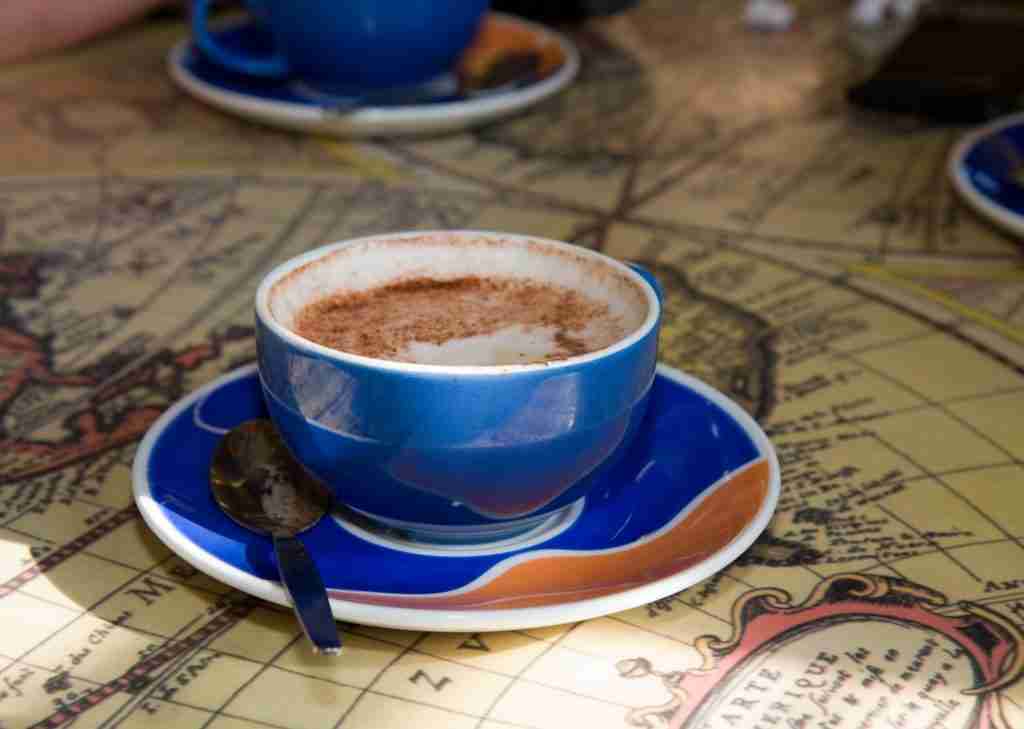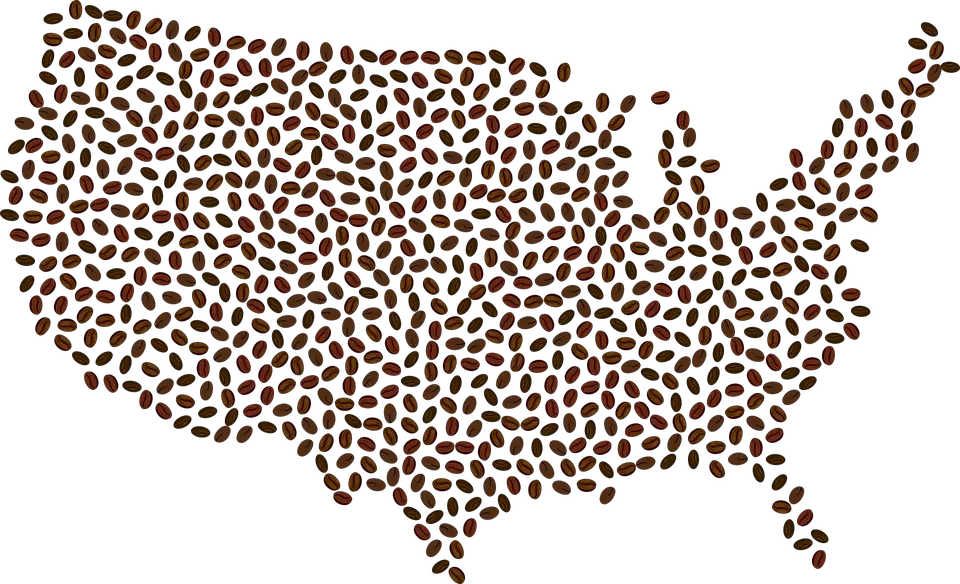
One of the most popular questions curious coffee lovers often ask is about the history of coffee. You probably already know that coffee is the most valuable legally traded commodity in the world, only second to petroleum. So how was it discovered, and when did we start drinking this black liquid gold?
The history of coffee is a long but entertaining story. There are several legends of its discovery as well as intriguing tales about coffee.
Coffee beans journeyed around the world throughout history. They were smuggled out of nations, banned several times by strict nations, and has changed the fortunes of many countries across the globe.
It has also been used for many purposes ranging from spiritual intoxicant to erotic stimulant and more. Are you ready to travel through time and continents to know how your favorite beverage came about? Grab a cup of coffee and read on.
The accounts of the origin of coffee

There are several legends of where this little bean got its start, and historians are yet to agree on a specific account. However, none of these legends are as popular as the ones from Ethiopia and Yemen. Let’s dig into them briefly.
Ethiopian coffee history
Many believe that the history of coffee can be traced to Africa, where it was discovered by an Ethiopian goat herder.
Legend has it that a goat herder from Kaffa named Kaldi, who lived on the Ethiopian plateau way back in the 9th century, discovered both the plant and its beverage stimulants in a single day. One day, Kaldi noticed that his goats were unusually energetic after eating some berries from a bush, and this made it hard for them to fall asleep as they were bleating loudly and jumping around – almost as though they were dancing.
This definitely wasn’t normal.
Puzzled by the excitement of the goats, Kaldi tried the bright red berries for himself, and he noticed the energizing effects on him.
This led him to present his discovery to a local monk who made a drink with the magic fruit and was amazed that he could stay awake all night to pray after consuming the drink. The monk then shared his findings with other monks, and this led to the gradual rise in popularity of coffee.
Another account suggests that the monk doubted the claims, calling the berries “the devil’s work.” So he threw them into a nearby fire, which resulted in a wonderful aroma that drifted through the air. Shortly after, the now roasted beans were retrieved from the fire, ground up, and was boiled to produce a drink.
And that was the story how the first cup of coffee was produced!
Yemen coffee history
While there are several claims that coffee originated from Yemen, only two of these accounts are given some consideration.
According to one of the legends, the Yemenite Sufi Ghothul Akbar Noooruddin Abu al-Hassan al-Shadhili was on a journey when he spotted birds energetically flying over his head.
He got tired and decided to rest for a while before he continued, and then he saw some jettisoned berries. When he tasted them, he noticed that he became unusually alert and was ready to resume his journey in no time.
The second popular origin myth of the beverage involved a certain Sheik Omar, a mentee of Sheik Abou’l Hassan, who was exiled for breaking a moral code. While in a desert close to the mountain of Ousab, he found a tree of red berries and decided to eat them to quench his pangs of hunger.
However, he was unable to enjoy the fruits because they were too bitter, so he threw them into the fire, whence the unmistakable aroma of the bean spread all around. He then collected the roasted beans and boiled them in a bid to soften them. When he noticed the delectable aroma from the increasingly brown liquid, he decided to take a sip of it to see if it tasted well.
Upon noticing the invigorating effects of the drink, he shared his tale with others from his hometown in Mocha, and he was celebrated for the discovery. His exile was lifted and he was allowed to return home again.
From Ethiopia into Yemen and the Arabian Peninsula
Many historians have expressed doubt about the accounts of the origin of coffee in Yemen, and it is generally believed that the coffee found its way to Yemen through its traders who brought the plants back home to cultivate.
Due to its popularity, coffee spread to other nearby countries, including Persia, Egypt, Syria, and Turkey. By the 15th century, it had become the beverage of choice in the Arab world, where it was popularly called “the wine of Araby.”
Around 1511, coffee was banned in Mecca on the charges of causing radical thinking and stimulation. The opposition was spearheaded by the Meccan governor Khair Beg, who was scared that the drink would lead to a protest against his government.
Shortly after, other countries like Egypt and Ethiopia also placed a ban on the cultivation, sale, and consumption of the beverage. The bans didn’t last for too long as they were eventually lifted.
Among its many uses, coffee was used as a spiritual intoxicant to aid concentration and improve alertness during nighttime devotions. It was widely loved in the Muslim community so much so that the Arabs kept a monopoly of the plant to make sure it did not germinate anywhere outside Arabia except in Africa.
With thousands of pilgrims from all around the world visiting Mecca, it was only a matter of time before word about the “the wine of Araby” began to spread. The Arabs enjoyed a monopoly of coffee until around the 1600s when an Indian pilgrim smuggled some coffee beans out of the holy city, leading to its spread to other parts of the world.
Coffee makes an entrance into Europe

With fertile beans finding their way out of the Arab world, coffee soon began to spread to the East in India and to the West into Italy and further into Europe. Europeans had their first taste of coffee in the 17th century when merchants brought the beans to wealthy Venetians, who enjoyed it so much and ordered larger quantities of the beans.
The beverage was first treated with suspicion, and religious prejudice as the Christian faithful in the city considered it to be a bitter invention of the devil, made to become a substitute for the wine used in the Eucharist. The controversy was so great that Pope Clement VIII had to intervene. Upon tasting coffee, the Pope exclaimed that the drink was delicious and subsequently gave his approval.
Coffee invades London
As the 1600s rolled on, coffee found its way into other parts of Europe, including Marseilles, Paris, and Vienna, until it was introduced to Oxford by a Turk in the mid-17th century. The drink was warmly received by the students and teachers, who established the “Oxford Coffee Club.” Within a few years, there were over 300 coffee houses in London alone.
By the late 17th century, coffee houses were the go-to place for many people, including merchants, shippers, brokers, artists, and more who spent their time discussing religion, politics, and business. Men spent a lot of time in these coffee houses, triggering a petition by women who were furious that their husbands no longer stayed at home that it should be banned.
Coffee travels to America

Having conquered other nations and continents, coffee traveled to America where it has made a huge impact. It was, however, largely unknown in the United States until the Boston Tea Party of 1773, which was a political protest that saw many Americans switch from consuming tea to coffee as a patriotic duty.
The Civil War furthered helped coffee gain more prominence as soldiers relied on the beverage to keep them alert and energized. Ever since the United States has been the leading importer of coffee.
Coffee spreads all around the world
By the 1800s, coffee had become a worldwide commodity, with plantations springing up in Indonesia, France, Brazil, Jamaica, and Uganda.
Here are a few notable timelines in the history of modern coffee:
- Ludwig Roselius invented a commercial decaffeination process for coffee in 1903.
- Melitta Bentz developed the paper coffee filter in 1908.
- David Strang of New Zealand invents instant coffee by using freeze-dried coffee in 1938.
- Achille Gaggia invented the modern espresso machine in 1946.
- The first Starbucks was opened in Seattle in 1971.
Wrap-up
Coffee might have had humble beginnings, but it is now a global phenomenon that is rated the second largest commodity traded in the world.
Many people everywhere now love their cup of Joe and rely on it to help them start their day on a bright note. Having its centuries-long voyage, we might not know what to expect from this beverage in the coming years, but there’s a possibility that this little bean will find another way to shake things up.


Very interesting story and easy to read.